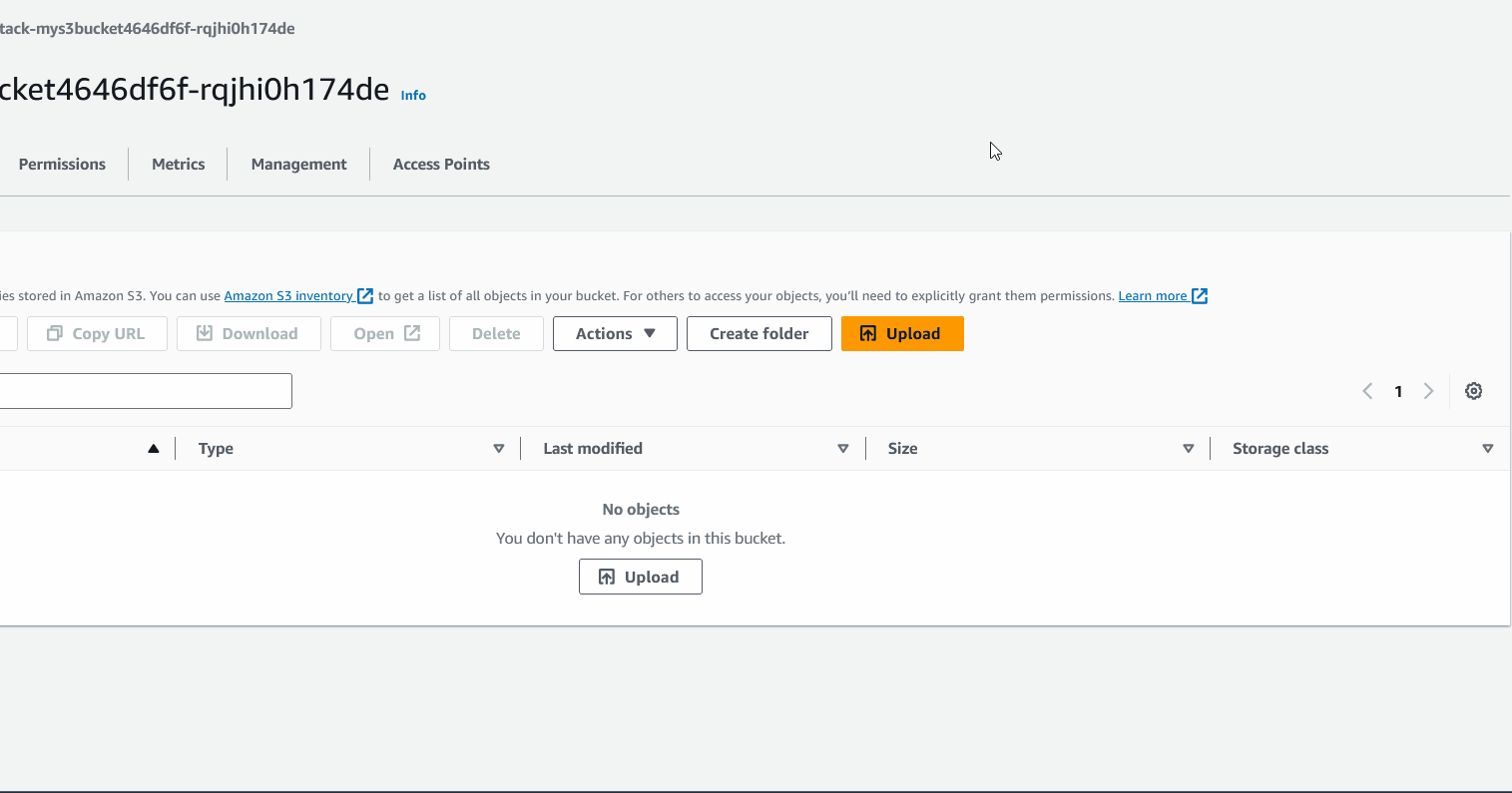Configure event notifications using EventBridge for S3 buckets using CDK
There are two ways to configure event notifications on the S3 bucket:
- Using EventBridge notifications. This is covered in this guide
- Using the
add_event_notificationmethod of theBucketconstruct. This is covered in the next guide

Configure EventBridge notifications
To configure EventBridge notifications, we will need to do the following:
- Turn on sending of S3 events to EventBridge: This is a one time activity, which can be done either from console or through CDK.
- Create an EventBridge rule: We define the rule using a pattern that specifies the event types to listen for and the targets to send the events to
- Create an EventBridge target: We attach a target to the rule that specifies the target resource to send the events to. In this case, we will add a simple Lambda function as a target.
Import the required modules
We need to import the aws_lambda and aws_events modules to create the Lambda function and the EventBridge rule respectively.
# filename: cdk_app/s3_stack.py#part-1
from aws_cdk import (
Stack,
aws_s3 as s3,
RemovalPolicy,
aws_lambda as _lambda,
aws_events as events, # 👈🏽 Import the events module
aws_events_targets as targets, # 👈🏽 Import the events_targets module
)
from constructs import Construct
Initialise the stack and create the S3 bucket
We will initialise the stack and create the S3 bucket as we did in the previous examples. We will also turn on sending of S3 events to EventBridge.
class S3Stack(Stack):
BUCKET_ID = "MyS3Bucket"
EVENT_RULE_ID = "MyS3BucketEventRule"
def __init__(self, scope: Construct, construct_id: str, **kwargs) -> None:
super().__init__(scope, construct_id, **kwargs)
# 👇🏽 Create the S3 bucket
my_bucket = s3.Bucket(
self,
id=self.BUCKET_ID,
removal_policy=RemovalPolicy.DESTROY,
event_bridge_enabled=True, # 👈🏽 Enable EventBridge notifications
)
Create the Lambda function
We will create a simple Lambda function that prints "File uploaded" when invoked.
# 👇🏽 Create the Lambda function
_lambda.Function(self,
id="MyFirstLambda",
runtime=_lambda.Runtime.PYTHON_3_7,
code=_lambda.Code.from_inline("def main(event, context):\n\tprint('File Uploaded')"),
handler="index.main",
)
Create the EventBridge rule
We will create an EventBridge rule that listens for events from the S3 bucket and sends them to the Lambda function.
# 👇🏽 Create an EventBridge rule
event_rule = events.Rule(
self,
id=self.EVENT_RULE_ID,
event_pattern=events.EventPattern(
source=["aws.s3"], # 👈🏽 Listen for events from S3
detail_type=["Object Created"], # 👈🏽 List of event types to listen for
detail={
"buckets": {
"name": [my_bucket.bucket_name], # 👈🏽 List of buckets to listen to
},
},
),
)
# 👇🏽 Add lambda function as a target for the EventBridge rule
event_rule.add_target(targets.LambdaFunction(my_lambda_fn))
Deploy the app
After the above changes, the full code will look like this:
# filename: cdk_app/s3_stack.py
from aws_cdk import (
Stack,
aws_s3 as s3,
RemovalPolicy,
aws_lambda as _lambda,
aws_events as events, # 👈🏽 Import the events module
aws_events_targets as targets, # 👈🏽 Import the events_targets module
)
from constructs import Construct
class S3Stack(Stack):
BUCKET_ID = "MyS3Bucket"
EVENT_RULE_ID = "MyS3BucketEventRule"
def __init__(self, scope: Construct, construct_id: str, **kwargs) -> None:
super().__init__(scope, construct_id, **kwargs)
my_bucket = s3.Bucket(
self,
id=self.BUCKET_ID,
removal_policy=RemovalPolicy.DESTROY,
)
# 👇🏽 Create the Lambda function
my_lambda_fn = _lambda.Function(
self,
id="MyLambdaFn",
runtime=_lambda.Runtime.PYTHON_3_7,
code=_lambda.Code.from_inline("def main(event, context):\n\tprint('File uploaded!')"),
handler="index.main",
)
# 👇🏽 Create an EventBridge rule
event_rule = events.Rule(
self,
id=self.EVENT_RULE_ID,
event_pattern=events.EventPattern(
source=["aws.s3"],
detail_type=["Object Created"],
detail={
"bucket": {
"name": [my_bucket.bucket_name],
},
},
),
)
# 👇🏽 Add lambda function as a target for the EventBridge rule
event_rule.add_target(targets.LambdaFunction(my_lambda_fn))
Now you can deploy the app by running cdk deploy. This will create the S3 bucket, the Lambda function and the EventBridge rule.

Test the app
Let's upload a file to the S3 bucket and see if the Lambda function is invoked.

If you check your CloudWatch logs, you will see that the Lambda function was invoked and it printed "File uploaded!".
